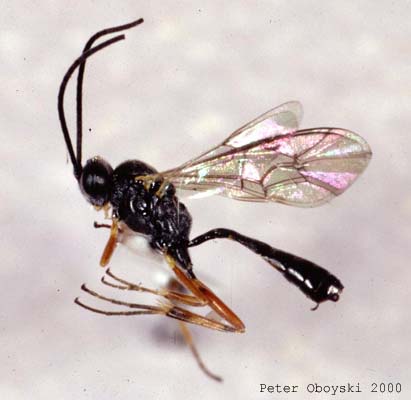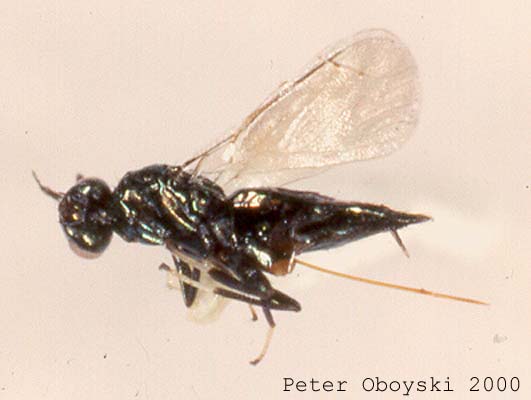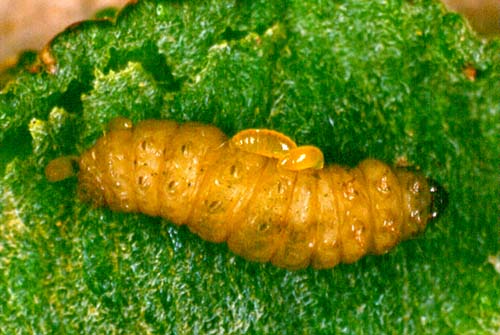Parasitoids (Ichneumonidae, Eulophidae) of Cydia moth larvae in Hawaii


Ichneumonidae: Diadegma blackburni (Cameron 1883) --_Ichneumonidae: Pristomerus hawaiiensis (Perkins 1910)
Cydia (Lepidoptera: Tortricidae) infesting mamane seeds (Fabaceae: Sophora chrysophylla) on Mauna Kea, Hawaii are parasitized by at least four wasp species (see Oboyski et al. 2004. Journal of Insect Conservation 8(2-3):229-240; Brenner et al. 2002. Pan-Pacific Entomologist 78(2):101-109). Two ichneumonid wasps, Diadegma blackburni and Pristomerus hawaiiensis were described from Hawaii, however some entomologists suspect that these wasps were accidently introduced to Hawaii. D. blackburni was also reported collected in Oregon in the 1890s, and although P. hawaiiensis was released in the US southwest for biological control of orchard pests (it apparently did not establish) it has not been collected outside of Hawaii. Calliephialtes grapholithae was not detected in Hawaii until the 1940's and probably represents a more recent introduction. Although this wasp is the most important biological control agent against koa seedworm (Tortricidae: Cryptophlebia illepida) that infest macadamia nuts, there is no documentation that it was purposely introduced into Hawaii. These three ichneumonid wasps are solitary endoparasitoids of small caterpillars (of several families) that feed within host plant tissues (seeds, galls, under bark, etc.). The eulophid wasp, Euderus metallicus, was also described from Hawaii and is thought to be indigenous to the islands. These wasps also prey on a wide range of caterpillar hosts that feed internally on plant tissues. Several larvae (2 to 20) of these wasps may be found on one caterpillar as external parasitoids.


Eulophidae: Euderus metallicus (Ashmead 1901) ---------Ichneumonidae: Calliephialtes grapholithae (Cresson 1890)

Larvae of Euderus metallicus on Cydia larva